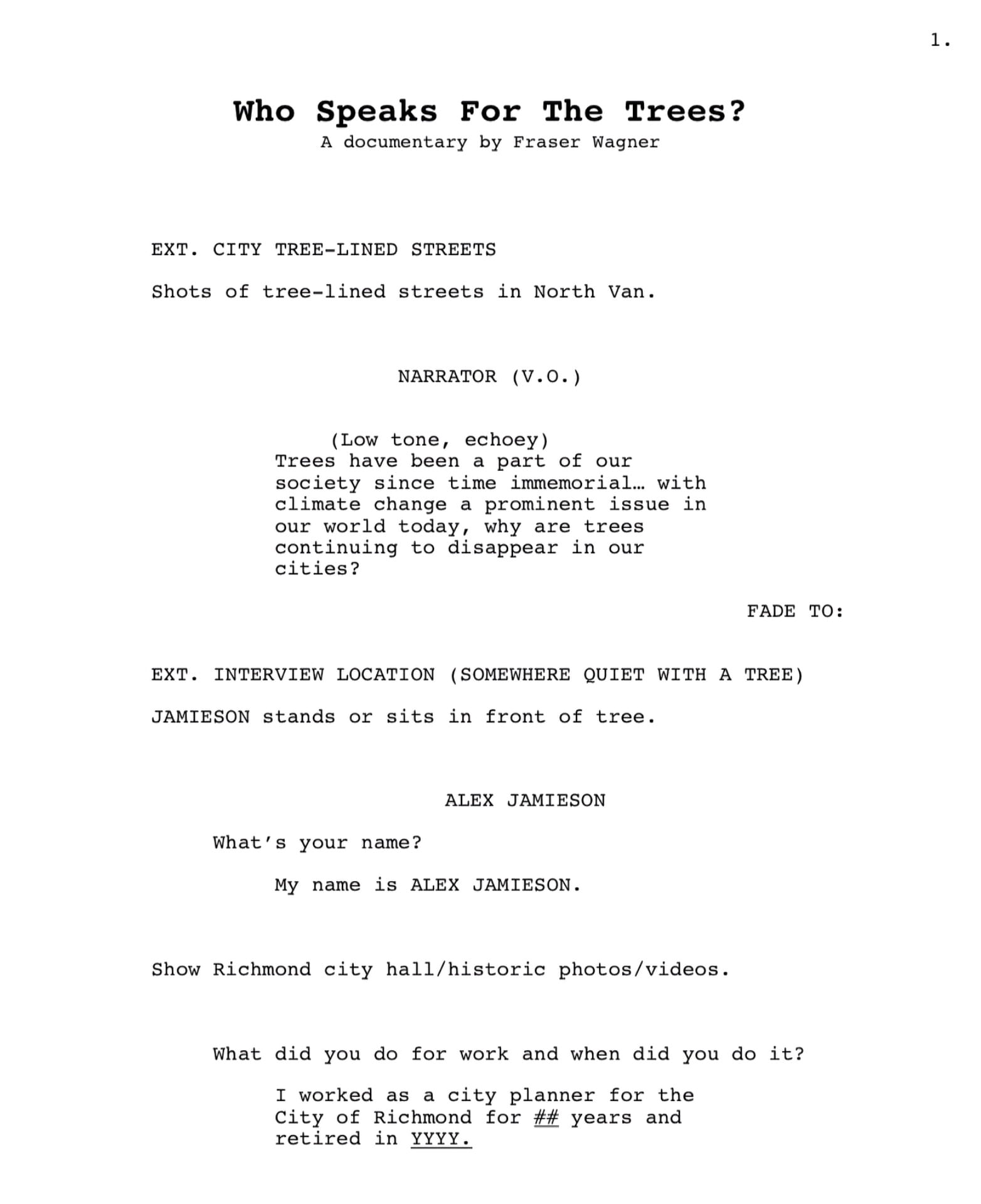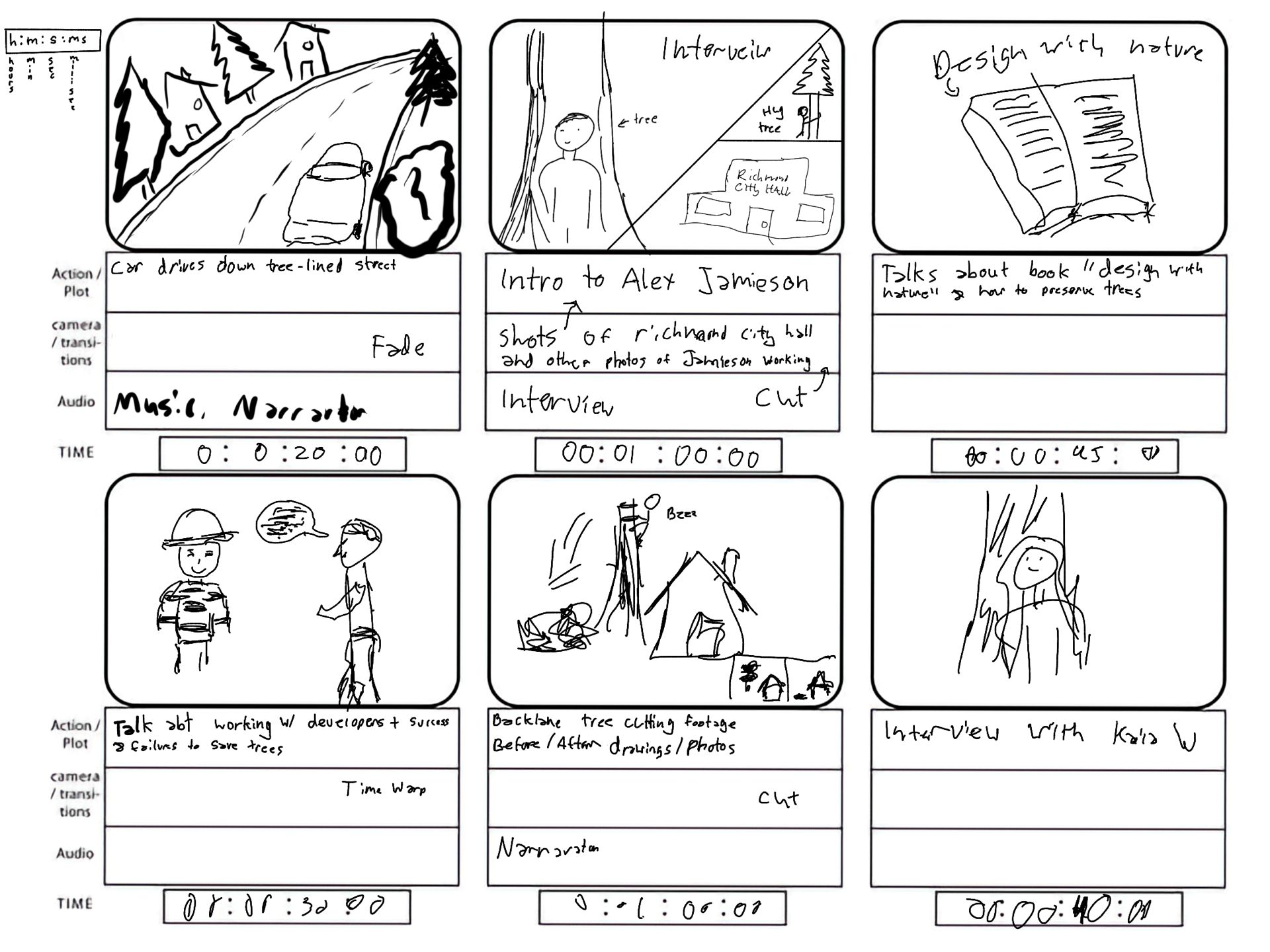If a tree falls in a city and nobody hears it, did it actually make a sound?
Follow former city planner Alex Jamieson (with interviews from his granddaughter, Kaia and his partner in crime, Michelle Sheardown) as he describes his continuing battle to convince developers to work around trees, instead of cutting them down, to beautify our cities.
• • •
The final Maker project for the 2021-2022 school year has come to a close. In this project we created documentaries about a topic that was important and personal to us. Our driving question for this project was:
How can I engage and entertain an audience
using my video and storytelling skills?
I believe that my documentary does answers the driving question excellently. I can use interviews and b-roll to tell the story using sound, music and video. By planning my story before filming I can ensure I will be able to communicate the story compellingly to the audience.
• • •
This project was a way for us to take all the skills we obtained and improved in our previous Maker project “Vibrant Video” and apply them to create a full documentary.
We started this project by touching up our interview recording skills. To do this Zach, Luca and I interviewed each other in the Vortex (seycove’s theatre):
We used the stage’s lighting, the props and an iPad which worked quite well. That being said, there were several ways in which we could have improved this video, such as moving the subjects further away from the backdrop and using more cameras for different angles.
• • •
I then shuffled through several ideas I had for a documentary, before settling on the topic of urban tree protection. I then wrote my log line and treatment. A log line is a short 2-3 sentence that describes what happens in your film, here’s mine:
If a tree falls in a city and nobody hears it, did it actually make a sound?
Follow former city planner Alex Jamieson (with interviews from his granddaughter, Kaia and his partner in crime, Michelle Sheardown) as he describes his continuing battle to convince developers to work around trees, instead of cutting them down, to beautify our cities.
A treatment is the longer version of the log line, essentially a paragraph like the ones on the backs of books that gives an overview what’s inside. Here’s what I wrote:
Trees have been an important part in our society for generations, so why stop now? A former city planner, Alex Jamieson, is passionate about preserving trees in urban cities. After graduating architecture school in 1970, he stumbled upon a book. As someone who loves trees (and books!), he found inspiration in the book, “Design with Nature” by Ian McHarg. Follow Jamieson as he describes his battle to convince developers, builders, and city planners to work around trees, instead of cutting them down. Flash forward 52 years, Jamieson is still collaborating with various groups of people who are passionate about environmental protection to protect trees in his city of North Vancouver after a horrifying event occurred a few years prior. On Earth Day 2015, a giant cedar tree was cut down across the lane from Jamieson’s house for development. Jamieson’s granddaughter Kaia recounts the event and how her mom, brother and herself wrote letters to the City each year asking for a tree bylaw. Now in 2022, a tree bylaw passes, but it’s not enough. Jamieson details how trees need protection on all zones: single-family homes and duplexes, not just on multi-family homes. Jamieson and his partner in crime, Michelle Sheardown, describe systems that need to be implemented to help draw carbon out of our atmosphere by using trees as carbon sinks, not furniture, to help make our city a more healthy and happy place to live.
I then began writing a screenplay for my documentary. A screenplay is basically a script for a film/movie that includes location, people, action and transitions. Here’s my screenplay (click to open):

After completing my screenplay, I began creating a very simple storyboard to plan out the timing of each shot:
I then started filming and compiling photos, videos and old footage. I also conducted interviews with Alex Jamieson (my grandfather), Kaia (my sister) and Michelle Sheardown (director of Drawdown BC). I filmed all my footage with my iPhone XS Max, and I think it just goes to show that you really don’t need an super expensive camera to make a good film or documentary. I also used a lapel mic to record audio for the voiceovers and interviews which really helped make the audio quality more crisp.
Then began the editing process. Unfortunately, my iMovie likes to crash on iPad when editing large projects, so I decided to use my laptop instead. There were some complications however, when the laptop couldn’t recognize my iPhone. After a lot of confusion and problem solving I was able to use iCloud to transfer the files from my iPhone to my laptop. I then used DaVinci Resolve to edit all the clips together. I learned some new things such as how to fix audio that was only playing out of one speaker, creating custom fusion titles and basic colour grading.
I also got to explore something I had never really tried before, as per the criteria for creating successful and engaging documentary: making my own music for my documentary.
 To accomplish this, I used the “Live Loops” in GarageBand. I used several live loops made by Apple as well as imported a few of my own including bird chirping that I recorded while on a walk in the woods. I then played around with different combinations of tracks till I got the type of music that went well with my documentary.
To accomplish this, I used the “Live Loops” in GarageBand. I used several live loops made by Apple as well as imported a few of my own including bird chirping that I recorded while on a walk in the woods. I then played around with different combinations of tracks till I got the type of music that went well with my documentary.
I’m really happy with the way the soundtrack turned out! If you’d like to listen to it separate from the rest of documentary you may do so below:
• • •
It took a lot of time, hard work and loads of feedback from family and friends, but I’m really proud of the final product. Huge thank you all of the people who helped with making this documentary the best it could possibly be: Alex Jamieson, Kaia W, Michelle Sheardown, Ava R, Alicia H, Teva B, Sylas K, my mom, my teachers (Mr. Harris and Ms. Maxwell) and many others!
If you didn’t watch my documentary at the start of this post, I highly recommend you do so now:
As someone who is passionate about both trees and film making this project was a lot of fun and a great way for me to expand my movie making skills! I look forward to more film making projects in the future.
Thanks for watching and reading. Let me know what you thought of my documentary and any questions in the comments below! Until next year’s Maker post! 👋







